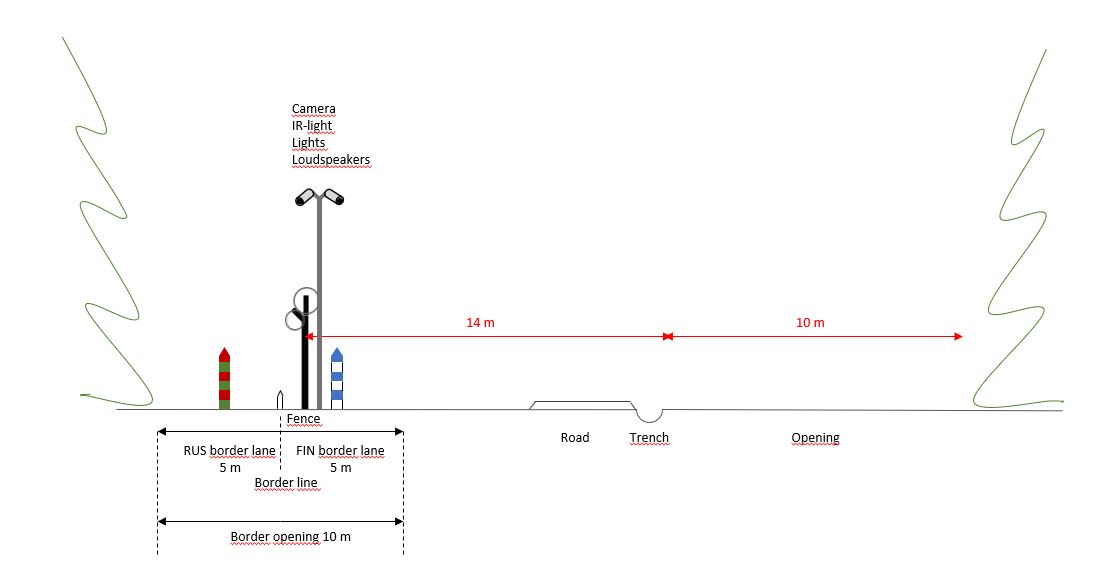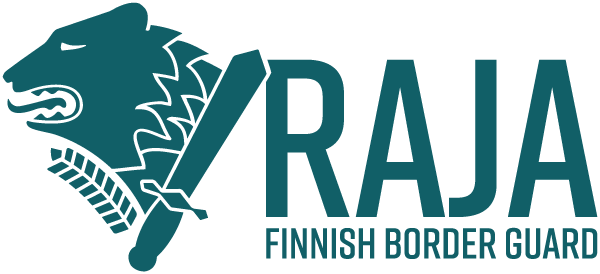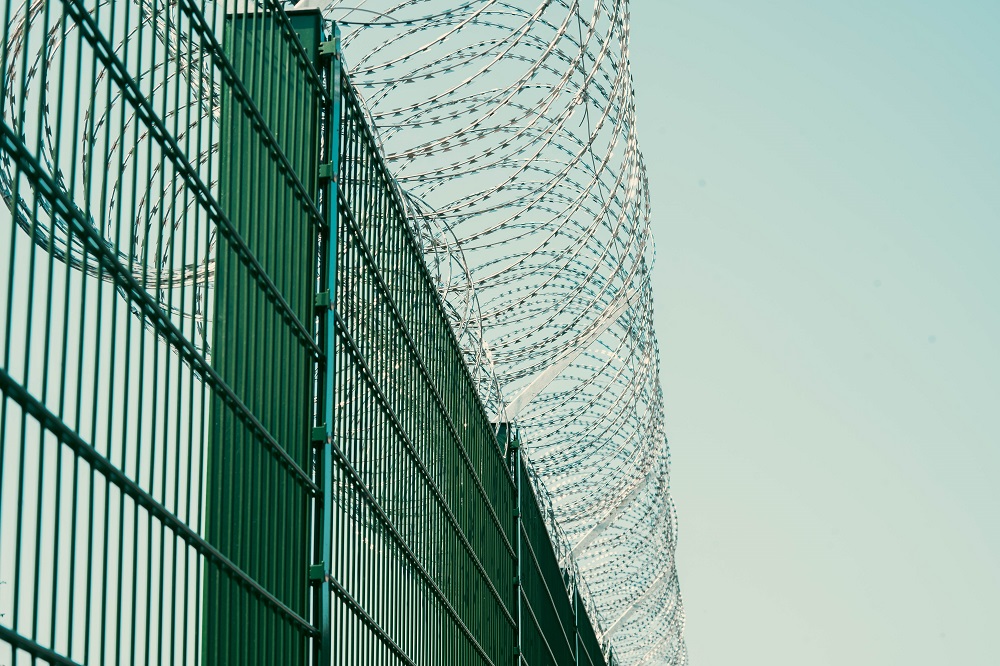Most asked questions
-
Finland prepares for widespread influencing that has been encountered in eastern Europe countries in recent years. The barrier fence improves our border surveillance here and now. It supports the management of disruptions at the border in a significant manner.
In practice, a physical border fence is necessary in exceptional situations, in which instrumentalised or otherwise widespread illegal migration would take place at the border. The barrier fence reduces Finland’s dependence on the effectiveness of Russian border control.
-
The total cost of the project is estimated at approximately 380 million euros. They consist of the material and construction costs of the barrier fence, road and surveillance system.
A road will be built next to the fence, wetlands are crossed by pontoon road and geo net solutions, trees are removed and foundations for the fence are laid.
Camera posts and surveillance cameras are installed every 50 metres. Electricity and telecommunication cables are installed for the barrier fence and electricity and data connections are procured. In many places, the installation distances are long. Alternative power sources are installed in order to improve the disruption resilience. The data system used in processing alarm data will be renewed.The barrier fence improves monitoring of territorial integrity as well as border surveillance during normal conditions. Possible violations of the territorial integrity will be detected more easily than in the current situation in the areas where the fence will be, and the fence prevents the person who is responsible for the violation from immediately entering deeper into Finland through terrain.
-
In total, the barrier fence is approximately 4.5 metres tall: a 3.5 metres tall fence made of metal wire netting with two cylinder formed obstacles on the top. Firm and deep foundations and heavy fence posts withstand the impact of an inrushing crowd. The structure of the fence elements prevents immediate passage. The solutions are at least at the same level as those chosen for the fences in the Baltic countries, for instance.
The Finnish Border Guard is able to rapidly respond to any attempts to climb over, get through or dig under the barrier fence. The technical surveillance system will send an alarm and, by using the road, the patrols quickly reach the said location.
The more specific details are classified by the authorities.

-
The fence is not built for military defence purposes.
-
There are border barrier fences in Estonia, Latvia and Lithuania, to name a few. Their basic solutions, measurements and construction is highly similar to the barrier fence in Finland.
General
-
In Finland, the terrain and weather conditions are demanding. The terrain varies and can present significant challenges for construction, and, in addition, the Finnish winter is long.
Furthermore, it is best to implement the construction of the barrier fence through multiple, reasonably-sized contracts. Moreover, it is not just a matter of building a road and a fence, as implementing the technical surveillance will also take its time.
Furthermore, before anything else can be done, there are hundreds of property owners within the border zone who must be contacted and served with the decisions in accordance with the Border Guard Act.
Finally, a lot of time must also be reserved for the tendering process in connection to the project. Due to all of these factors, the construction will take several years.
-
Other solutions, such as increasing staff and technical surveillance, are neither cheaper nor as effective in reducing dependence on Russia. For example, if large-scale illegal entry took place in the absence of a barrier fence, nearly a thousand extra border guards would be needed. Training such a large number of staff would take around ten years, and these staff would not then be utilised in normal conditions.
-
The barrier fence will not prevent asylum seekers from applying for asylum. On the contrary, it allows asylum seekers arriving to Finland through terrain, for instance, to obtain official assistance more quickly.
A barrier fence is necessary in order to control situations where asylum applications are concentrated at one or more border crossing points. Such situations could involve, for example, an exceptionally large number of migrants arriving in a short space of time, or instrumentalisation of migration by a state or another party.
The decision to concentrate asylum applications is made by the Government.
Furthermore, the barrier fence is of great importance in a situation where the Act on Temporary Measures to Combat Instrumentalised Migration has been introduced.
-
The barrier fence project will mainly be carried out in a restricted procedure, in accordance with the Public Defence and Security Procurements Act (1531/2011). The Finnish Border Guard will publish a public notice of procurement, and those who are interested may request a permission to participate. Only candidates chosen by the Finnish Border Guard may tender.
The Finnish Border Guard publishes details of its procurements at: hankintailmoitukset.fi (opens in a new tab).
-
The Government, at the proposal by the Finnish Border Guard and the Ministry of the Interior, has decided on the construction of a barrier fence on the eastern border. This decision was made under parliamentary consensus.
-
The cooperation of Finnish and Russian border authorities has been agreed in state treaties. The barrier fence will not in any way change the established practice of cooperation.
-
Instrumentalisation of migration refers to a situation where the entry is facilitated by another state. In this case, the migrants are used to direct political pressure on Finland.
-
A barrier fence at the eastern border is needed in the current security situation for maintaining order at the border, as it will boost the Finnish Border Guard’s border control capacity at the eastern border during normal conditions, disturbances and emergency conditions. It will be one new, permanent, additional element in the implementation of border surveillance and in the operational activities.
It prevents illegal entry, speeds up the detection and apprehension of persons crossing the border illegally, enables the prevention of large-scale and instrumentalised migration, and enhances regional surveillance and the prevention of territorial violations.
A physical barrier fence is essential in situations of large-scale migration, where it serves to slow down and guide the movements of any crowds that form.
The barrier fence makes it possible to prevent people from entering Finland in a situation where the Government has decided to concentrate applications for international protection.
Location and surroundings
-
The barrier fence is not built to prevent individual illegal border crossings, but to prevent instrumentalised or other illegal migration. Even though the barrier fence improves detection of individual illegal border crossings and arresting the said persons, it will not prevent all of them.
The barrier fence will be built on areas where the instrumentalised migration is likely be greatest. There are widespread wilderness areas along the 1,340 kilometres long eastern border of Finland, especially on the Russian side, where widespread instrumentalised migration is so unlikely that it is not sensible to build a fence on these areas.
-
In the beginning, the barrier fence will be built in areas of highest risk, i.e. in practice at border crossing points and neighbouring areas. Later, the aim is to extend the barrier fence to areas with other passages across the border or in the vicinity.
First, approximately 70 kilometres of barrier fence will be built on the international border crossing points and their flanks in Southeast Finland, North Karelia, Kainuu and Northeast Ostrobothnia. The construction of eight target areas, in total, will start during the summer and autumn. In the late au-tumn, removal of trees will start also at the target areas of the next stage, where small roads lead across the border and in areas of corresponding risk level. These areas are 128 kilometres, in total, on the area between Southeast Finland and Lapland. -
Animals will be able to enter through unfenced areas or through gateways or openings intentionally integrated into the fence. Water systems and culverts that pass under the fence and road will also provide routes for animals.
Open gates will ensure animals can pass through the fence. These gates will be monitored by camera surveillance. The environmental assessment of the project will be utilised in the more detailed planning of the locations of animal gates. If the border situation so requires, the gates can be closed.
-
The planning of the route for the fence gives consideration to nature reserves, skirting around them where possible. An environmental report on the barrier fence has been commissioned from an external expert. The findings of this report will be taken into account in the more detailed fence planning work.
-
Only if an agreement can be reached with the landowner. The legislation only sets obligations for owners of land or water areas that are located in the border zone.
(Border Guard Act (15.7.2005/578) section 50 (8.7.2022/698) Barriers: The owner or holder of land or water areas within the border zone is obliged to permit the construction of a fence or other type of barrier, at the state’s expense, if this is necessary for the maintenance of border management.)
-
The fragmentation of the terrain is not considered to be a significant problem. No fence will be built by the lakes and major rivers, since they are areas that are unlikely to be used in large-scale illegal migration into Finland. Challenging terrain can be circumvented while staying within the border zone. In addition, possible gaps in the barrier fence can be strengthened or the barrier fence can be prolonged with temporary barrier appliance solutions.
-
Fencing the entire land border would be neither cost-effective nor sensible. A significant portion of Finland’s border is difficult for large groups of people to reach.
The plans involve building the barrier fence in areas where, based on a risk analysis, the need is likely to be greatest.
-
This matter is covered in sections 50 and 50a of the Border Guard Act (578/2005). The owner or holder of land or water areas within the border zone are obliged to permit i) the construction of a fence or other barrier, at the state’s expense, if this is necessary for the maintenance of border management (border barrier), ii) the construction of the barrier trail, iii) the removal of trees and other vegetation that hinder the construction and maintenance of the barrier, the barrier trail, or the border road and iv) the carrying out of essential earthmoving and water construction work.
Border barriers may not be constructed in areas of domestic peace as defined in chapter 24 and section 11 of the Penal Code. Under international agreements binding on Finland, fair compensation shall be paid to the owner or holder of the land or water area for the damage and inconvenience caused by a border barrier constructed elsewhere than at the edge of the open area at the Finnish border.
Decisions made under sections 50 and 50a can be appealed at the Administrative Court. The decisions can be enforced, however, even if such an appeal has been made.
-
The barrier fence placed next to the borderline supports control of the situation in the most effective way in situations of instrumentalised and other illegal large-scale migration, when application for international protection is concentrated elsewhere by Government decision. Furthermore, the barrier fence is of great importance in a situation where the Act on Temporary Measures to Combat Instrumentalised Migration has been introduced. Close to the border line, the barrier fence clearly indicates the national border and it has a stronger effect.

